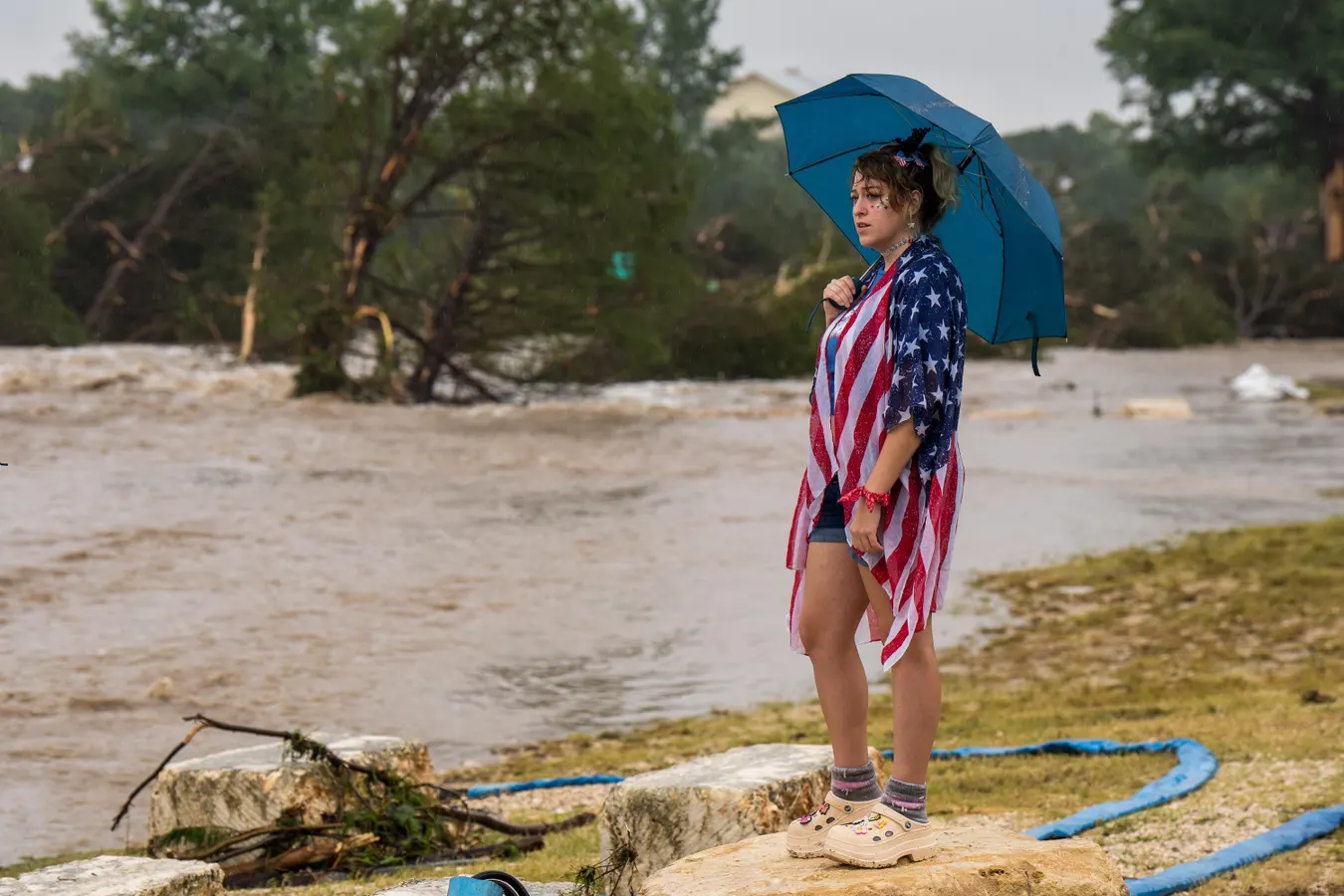By Contributor Douglas B. Laney Eric Vryn
KERRVILLE, TEXAS – JULY 04: Kerrville resident Leighton Sterling watches flood waters along the … More Guadalupe River on July 4, 2025 in Kerrville, Texas. Heavy rainfall caused flooding along the Guadalupe River in central Texas with multiple fatalities reported. (Photo by Eric Vryn/Getty Images)
Getty Images
Earlier last year I published a warning about Trump administration data-related deletions that would restrict access to or manipulate publicly available information critical to citizen health and safety. While certain historical government data has been preserved by various organizations, some important real-time information is now in short supply.
And in a tragically ironic twist, Elon Musk’s own generative AI tool, Grok 3, implicates the Trump/DOGE cuts to the US National Weather Service and NOAA in contributing to the dozens of Texas flood deaths on July 4:
“The cuts to the National Weather Service (NWS) by the Department of Government Efficiency (DOGE) under the Trump administration significantly impaired the agency’s ability to provide accurate and timely forecasts, which likely contributed to the severity of the Texas flood disaster on July 4, 2025. Here’s how these cuts played a role:
Staffing Reductions: The NWS lost approximately 560–600 employees in early 2025 due to DOGE-initiated cuts, reducing its workforce by nearly 20%. Key positions, such as the warning coordination meteorologist at the Austin/San Antonio office and the meteorologist-in-charge at the San Angelo office, were vacant due to early retirement incentives. These roles are critical for coordinating with local emergency managers to ensure effective warning dissemination and response planning. The absence of these personnel likely hindered communication and coordination with local officials and camps like Camp Mystic, delaying critical evacuation efforts.
Degraded Forecasting Capabilities: The cuts led to “degraded” forecasting services, as noted in an internal NWS document from April 2025. The NWS forecast for the Texas Hill Country predicted 3–6 inches of rain in the Concho Valley and 4–8 inches in the Hill Country, significantly underestimating the actual 10–15 inches that fell. Experts warned that staff shortages and reduced resources, including the cessation of some weather balloon launches critical for collecting atmospheric data, compromised forecast accuracy. This underestimation meant that local officials and camp organizers did not anticipate the catastrophic scale of the flooding, which saw the Guadalupe River rise over 20 feet in less than two hours.
MORE FOR YOU
Warning Dissemination Issues: Although the NWS issued timely flood watches and warnings, including a flash flood emergency at 1:14 a.m. on July 4, the lack of key staff and a robust local warning system in Kerr County delayed public notifications. For example, the Kerrville Police Department’s first public warning on Facebook came at 6:16 a.m., hours after the NWS alert and when the river was already rising rapidly. The absence of a warning coordination meteorologist likely exacerbated this gap, as this role facilitates direct communication with local emergency services.
Systemic Vulnerabilities: The cuts were part of a broader reduction in NOAA’s budget and operations, including the elimination of weather research labs and climate research programs, which further weakened the NWS’s ability to predict extreme weather events. Posts on X and expert analyses highlighted concerns that these cuts, driven by DOGE’s cost-saving measures, prioritized budget reductions over public safety, with warnings as early as February 2025 that such actions could lead to deadly consequences.
Conclusion: The consensus among critics, including Texas officials and experts, is that the understaffing and reduced resources likely contributed to the forecast’s underestimation of rainfall and the delayed local response. This was particularly critical in a region known for flash flooding, where timely and accurate warnings could have prompted earlier evacuations at Camp Mystic and other vulnerable areas, potentially reducing the death toll of at least 43, including 15 children. The staffing shortages and reduced forecasting capabilities likely amplified the challenges of preparing for and responding to the disaster, contributing to the tragic outcome.”
Data Is Everybody’s Business
This is a cautionary tale for business leaders as well, not just individuals. Executives should be keenly aware of how the disappearance of public or other data sources could affect their organization’s own health and survival. For many types of valuable information, alternative sources exist among the dozens of social media platforms, hundreds of private organizations, and thousands of syndicated data providers. Unfortunately, most organizations have entire departments dedicated to procuring office supplies, sourcing raw materials, and hiring individuals—but not a single person dedicated to identifying and curating external data sources.
Editorial StandardsReprints & Permissions
